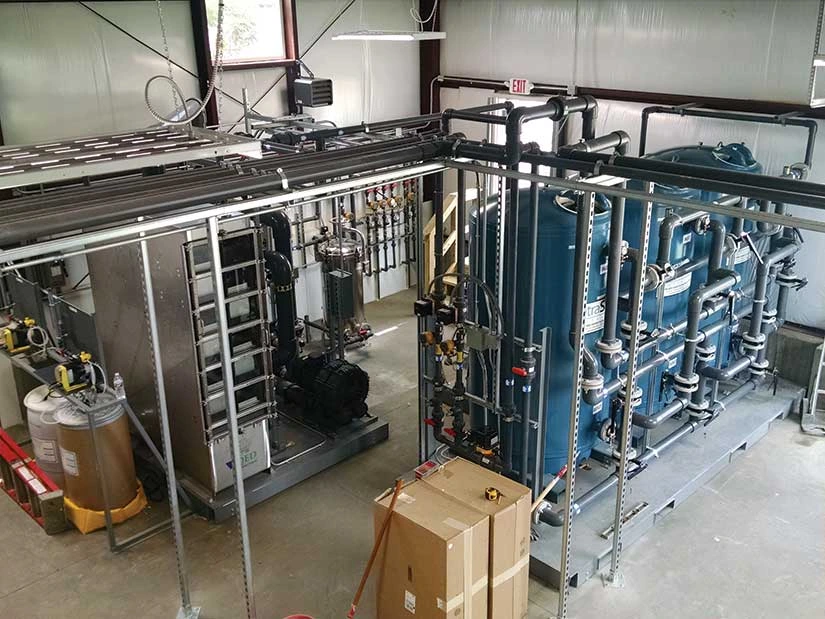Groundwater Treatment Plant Design-Build
Client Challenge
An aging groundwater treatment plant at a former chemical manufacturing facility was no longer effective due to excessive fouling, downtime, and operational expenses. The facility owner, a global chemical company, has worked closely with state regulators to bring the site into compliance, with much of the property now a natural area and environmental center. This emphasis on environmental responsibility spurred the treatment system replacement project. GES was asked to complete the system design and construction within an expedited timeframe, and to limit on-site construction activities to 14 weeks. Work scope included demolition of the in-place structure and equipment as well as engineered design and construction management of the new system.
GES Solution
The design was focused on controlling future operational costs while assuring ongoing system effectiveness and reliability. Safety, always a paramount concern, was incorporated into all aspects of the project. GES and the project team carefully coordinated and managed high-risk construction activities (including confined space entry and aerial lift work) with no injuries to any of the multidisciplinary team members.
Demolition of the in-place system included decontamination of system components, safe removal of process equipment, waste management, and permitting and compliance. Cost savings were achieved through the reuse and retrofit of the existing concrete containment pad for the new plant floor and maintenance of the existing groundwater recovery network of eight recovery wells and underground conveyance system. GES worked closely with the client, construction contractors, and equipment vendors to implement an efficient construction approach that reduced delivery and installation labor costs. Skid-mounted equipment provided a flexible, lower-cost solution for coordinating system placement with building construction activities.
GES conducted a treatability study and lifecycle cost analysis to ensure the system’s continued ability to treat groundwater at a minimum rate of 50 gallons per minute. A PLC-based control system with integral SCADA system provides remote monitoring, control, and data logging capabilities to improve system responsiveness and decrease operating costs. Process design enhancements include chemical metering to sequester dissolved iron and manganese; anti-scaling agents to protect equipment and piping integrity; filtration and ultraviolet light to minimize biofouling from the influent stream; enhanced settling, filtration, and backwash to remove accumulated solids from the filtration system; and an auxiliary cartridge filter system that automatically switches to the backup cartridge in case of fouling.
Client Value
The design-build project was completed within the expedited schedule, within budget, and without safety incident. Start-up testing, commissioning, and operator training were successfully completed to ensure proper operation and maintenance of the new system. The operational performance of the system has led to new OM&M opportunities with this client at two additional sites that may require remediation system upgrades.
